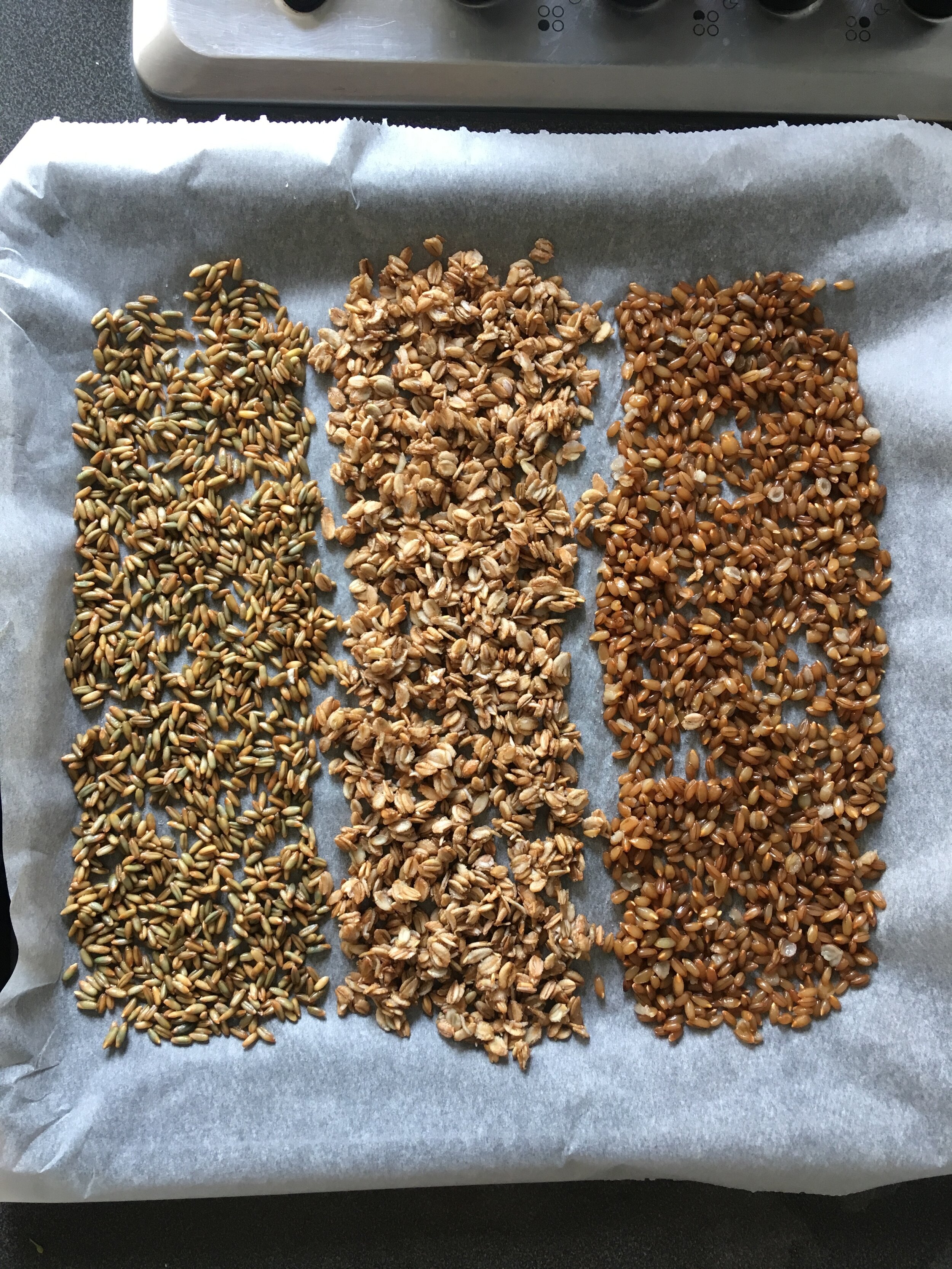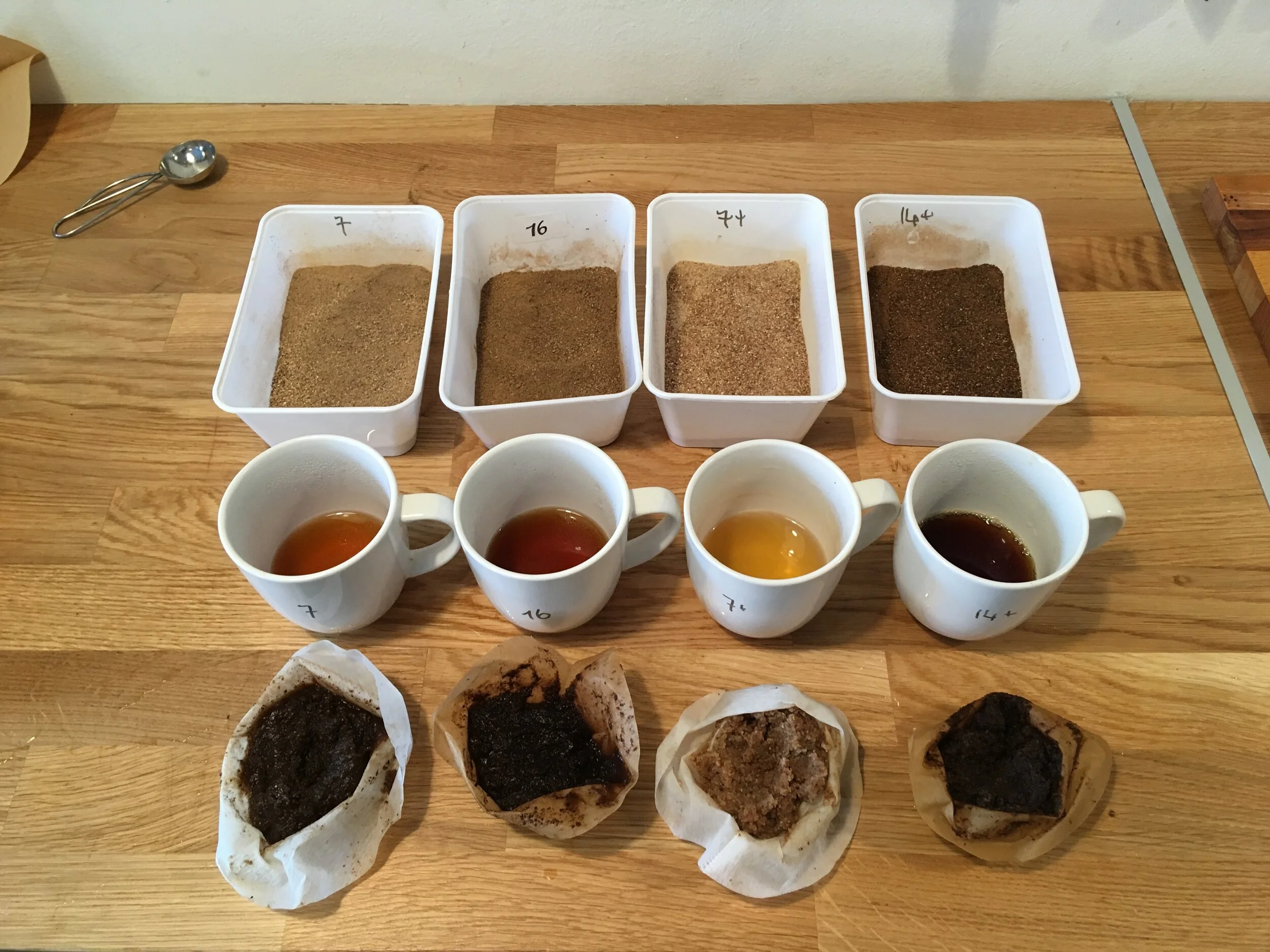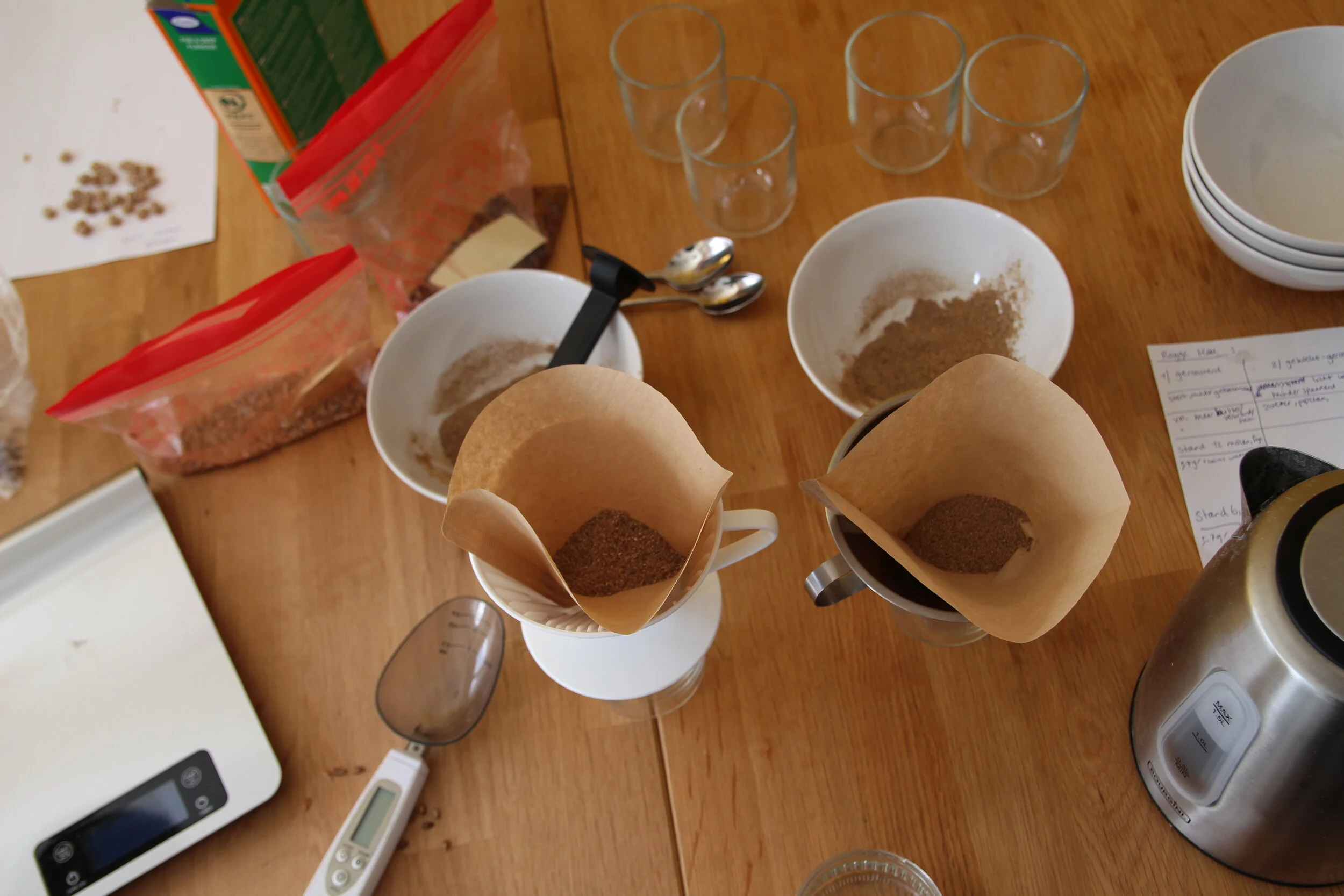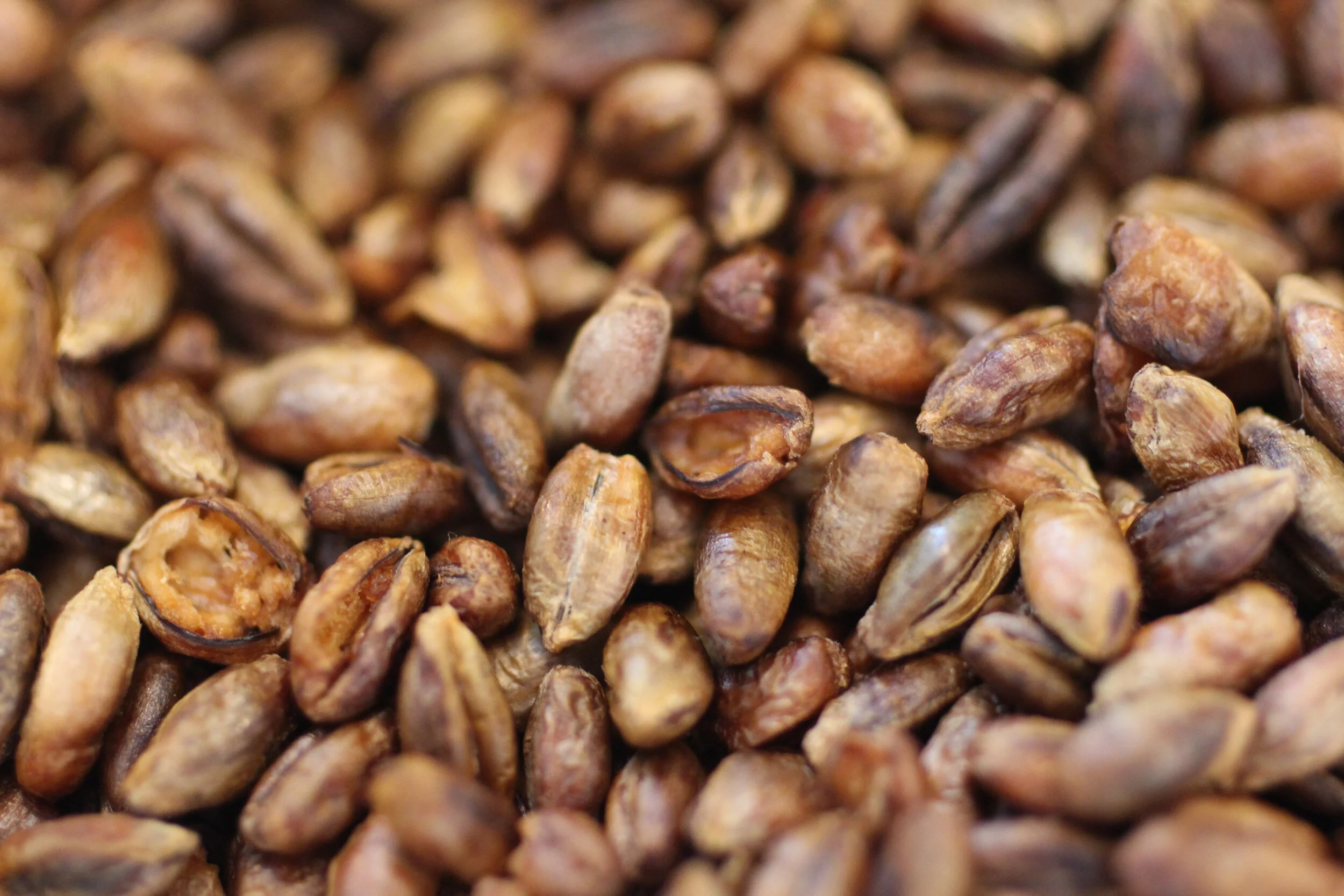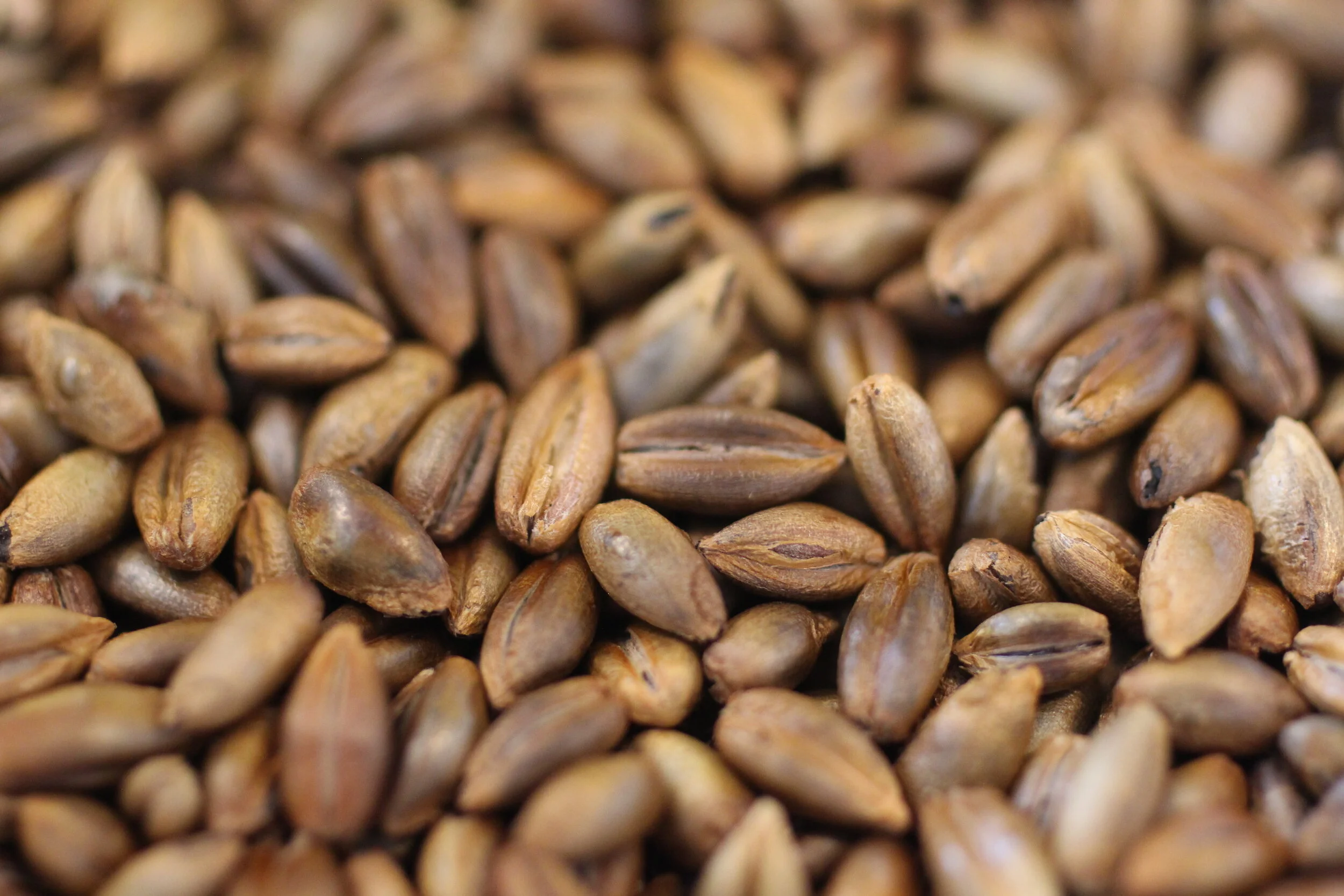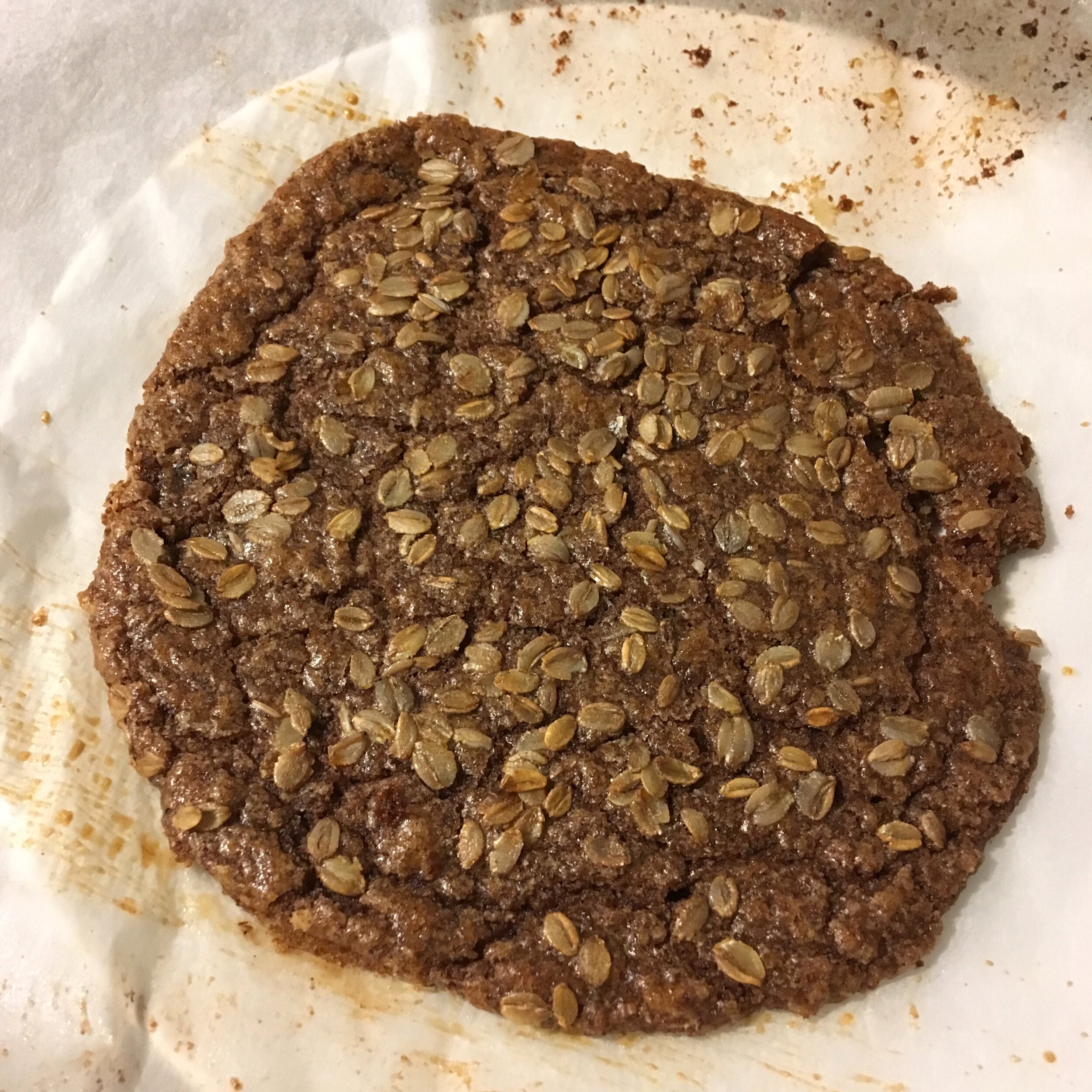Loerielab
Experimental surrogate coffee from local Dutch rye
Year of project: 2018
Client: Eindhoven Museum door de Stad
Experimental coffee’ lab; exhibition, surrogate coffee tasting, workshop
—
”Dès gin lèkker bèkske leut: dès loerie!”
Loerie means weak or impure coffee in Brabant dialect and originates from the time around the Second World War when coffee was too expensive for the common man and all kinds of tricks were invented to be able to drink some sort of coffee..
Loerielab is a project commissioned by the Eindhoven Museum as part of the Eindhoven Museum through the City project. The installation shows a brief history of the coffee culture in Eindhoven, you can listen to (audio) stories of elderly about their memories of coffee from before, during and after the second world war, visitors can taste variations of rye surrogate coffee and participate in a DIY Loerie workshop. The project connects the ingenuity of the small farmers with the contemporary love for coffee and the search for more sustainable and healthier food and beverage alternatives.
Workshop DIY surrogate coffee making and tasting session during Dutch Design Week 2018, Eindhoven. Photo by Wouter van der Wall
Coffee inventiveness originated from poverty
Farmers from Eindhoven were very poor because crops hardly grew on the sandy soil. Coffee beans, however, were expensive. To be able to drink a cup of "coffee", the farmers made surrogate coffee from burnt peas, old grain or chicory. Rye is an example of a crop that does grow well on poor sandy soil.
Just as with coffee beans, adjustments in the pre-processing of the grain, the way of roasting, the size of the grind and the method of making coffee all affect the taste and aroma of the coffee. This means that experimentation with rye as raw material for surrogate coffee is endless! For example: pre-cooking and drying of the grain before light roasting creates a sweet, almost popcorn-like taste. Medium roasting will provide a more caramel and nutty flavor while heavy roasting makes the surrogate coffee very bitter. The size of the grind effects the drip time and therefore the intensity of the flavor: a coarse grind allows water to flow through very quickly with little opportunity for flavor infusion, whereas if the grind is too fine, the high amount of fiber in the rye will swell and block any liquid from running through.
Popularity increase due to ‘green’ character
Nowadays, surrogate coffee is no longer drunk out of necessity, but increasingly as a conscious choice for sustainability or health reasons. There is no caffeine in surrogate coffee, it is easy to make yourself and does not need to come from far away countries. There are quite a few types of surrogate coffee available, but sadly they are only available as soluble coffee. In order to make rye surrogate coffee 'hip' and in line with contemporary culture, the different flavours of rye coffee were made as a drip coffee in the Loerielab. In this way the ingenuity of the small farmers is linked to the contemporary love for coffee and the search for a more sustainable and healthier foods and beverages.
From pulp to speculaas
Because the rye pulp is perfectly edible, it’s a shame to throw it away after the coffee has been brewed. With minimal additions (bit of butter and spices) I turned the pulp into speculaas. The great think about this is that the characteristic taste of each blend of surrogate coffee can be tasted in the speculaas!

